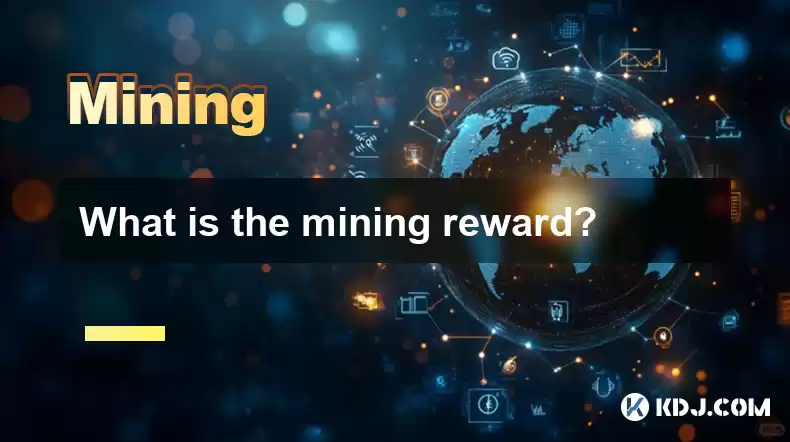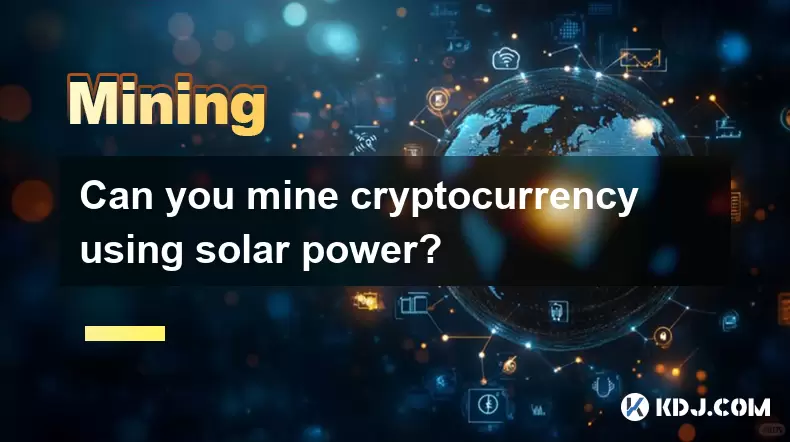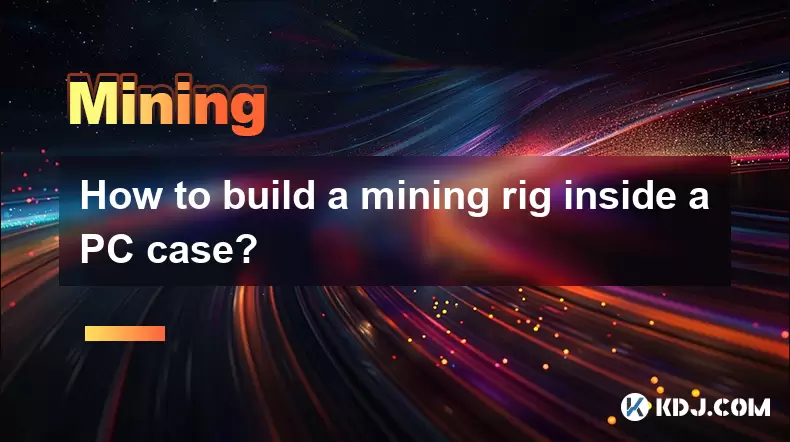-
 Bitcoin
Bitcoin $117600
2.11% -
 Ethereum
Ethereum $3907
6.13% -
 XRP
XRP $3.288
9.68% -
 Tether USDt
Tether USDt $1.000
-0.01% -
 BNB
BNB $784.8
2.00% -
 Solana
Solana $174.3
3.60% -
 USDC
USDC $0.9997
-0.03% -
 Dogecoin
Dogecoin $0.2220
8.04% -
 TRON
TRON $0.3379
0.01% -
 Cardano
Cardano $0.7829
5.46% -
 Stellar
Stellar $0.4348
8.84% -
 Hyperliquid
Hyperliquid $40.50
6.38% -
 Sui
Sui $3.757
7.22% -
 Chainlink
Chainlink $18.41
10.06% -
 Bitcoin Cash
Bitcoin Cash $581.6
1.91% -
 Hedera
Hedera $0.2586
5.37% -
 Avalanche
Avalanche $23.30
4.67% -
 Ethena USDe
Ethena USDe $1.001
0.01% -
 Litecoin
Litecoin $122.0
2.62% -
 UNUS SED LEO
UNUS SED LEO $8.972
-0.23% -
 Toncoin
Toncoin $3.338
1.14% -
 Shiba Inu
Shiba Inu $0.00001282
3.76% -
 Uniswap
Uniswap $10.38
6.88% -
 Polkadot
Polkadot $3.852
4.63% -
 Dai
Dai $1.000
0.02% -
 Bitget Token
Bitget Token $4.463
2.29% -
 Monero
Monero $263.6
-7.22% -
 Cronos
Cronos $0.1496
4.78% -
 Pepe
Pepe $0.00001106
4.91% -
 Aave
Aave $284.3
8.09%
What is the mining reward?
Cryptocurrency miners receive rewards for verifying transactions, a crucial incentive for maintaining network security. These rewards, varying by cryptocurrency, are often halved periodically, impacting miner profitability and the cryptocurrency's supply.
Mar 18, 2025 at 10:30 am

Key Points:
- Mining rewards are the cryptocurrency payouts miners receive for verifying and adding new blocks of transactions to a blockchain.
- The reward varies depending on the cryptocurrency and its protocol. It's often reduced over time through a process called halving.
- Mining rewards are crucial for incentivizing miners to secure the network and maintain its integrity.
- The complexity of mining and the associated costs (hardware, electricity) directly impact a miner's profitability.
- Understanding mining rewards is crucial for anyone interested in participating in or understanding the economics of cryptocurrency.
What is the Mining Reward?
The mining reward is the cryptocurrency a miner receives as compensation for their computational work in verifying and adding new blocks of transactions to a blockchain. This process is essential for maintaining the security and integrity of the entire cryptocurrency network. Think of it as a payment for providing a vital service – ensuring the validity of transactions and preventing fraudulent activities. Without mining rewards, there would be little incentive for miners to dedicate their resources to this computationally intensive task.
How Mining Rewards Work:
The specific mechanics of mining rewards differ depending on the cryptocurrency. For example, Bitcoin's mining reward is currently 6.25 BTC per block. This reward is halved approximately every four years, a process known as halving, which gradually reduces the rate of new Bitcoin entering circulation. Other cryptocurrencies have different reward structures and halving schedules. The reward is distributed amongst the miners who successfully solve the complex cryptographic puzzle first, with the largest share going to the first to solve it.
Factors Affecting Mining Rewards:
Several factors influence the size and frequency of mining rewards. The most significant is the cryptocurrency's protocol, which dictates the reward amount and the halving schedule. The difficulty of mining, adjusted periodically to maintain a consistent block generation time, also plays a role. A higher difficulty means fewer miners will successfully mine a block, reducing the frequency of rewards but potentially increasing the individual reward value.
Types of Mining Rewards:
Beyond the primary block reward, some cryptocurrencies offer additional rewards. These may include:
- Transaction fees: Miners often receive transaction fees alongside the block reward. These fees are paid by users to prioritize their transactions and are incorporated into the block. The higher the transaction volume, the higher the potential transaction fees for miners.
- Staking rewards: Some cryptocurrencies utilize a Proof-of-Stake (PoS) consensus mechanism instead of Proof-of-Work (PoW). In PoS, users stake their coins to validate transactions and earn rewards based on the amount staked and the time it's locked up. This is distinct from the mining rewards associated with PoW systems.
The Role of Mining Rewards in Network Security:
Mining rewards are fundamental to the security of many cryptocurrencies. The competition to earn these rewards drives miners to invest in powerful hardware and maintain their operational efficiency. This creates a distributed network with a high level of computational power, making it incredibly difficult for malicious actors to tamper with the blockchain or launch successful attacks. A robust mining reward system ensures the long-term viability and security of the cryptocurrency.
Calculating Mining Profitability:
Determining the profitability of mining depends on several factors: the current cryptocurrency price, the mining reward, the electricity costs, the hardware costs (including initial investment and maintenance), and the mining difficulty. Miners need to carefully evaluate these factors to ensure their operations remain profitable. A decline in cryptocurrency price or an increase in difficulty can significantly impact profitability, potentially leading to miners switching to more profitable cryptocurrencies or shutting down their operations altogether.
The Impact of Halving:
The halving mechanism, common in many cryptocurrencies, is a planned reduction in the mining reward. While this reduces the rate of new coin creation, it can also have a positive impact on the price, as the reduced supply can increase demand. However, the effect of a halving on the price is complex and depends on various market factors. It's important to note that the halving itself doesn't automatically guarantee a price increase.
Common Questions and Answers:
Q: Are mining rewards the only way to earn cryptocurrency?
A: No, there are other ways to earn cryptocurrency, including staking, trading, lending, and participating in airdrops or other promotional events.
Q: How often are mining rewards paid out?
A: The frequency of payouts depends on the cryptocurrency and its block generation time. Some cryptocurrencies have much faster block times than others, leading to more frequent rewards.
Q: Can anyone participate in cryptocurrency mining?
A: Technically yes, but the profitability of mining often requires significant investment in specialized hardware and a deep understanding of the process. The high energy consumption associated with mining is also a crucial factor to consider.
Q: What happens to mining rewards when a cryptocurrency's price drops?
A: When a cryptocurrency's price drops, the value of the mining reward in fiat currency decreases. This can significantly impact the profitability of mining operations, potentially leading to miners switching to more profitable cryptocurrencies or halting their operations.
Q: What is the difference between mining rewards and transaction fees?
A: Mining rewards are the primary compensation for miners for securing the network, while transaction fees are payments from users to prioritize their transactions. Miners often receive both.
Q: Is mining environmentally friendly?
A: The environmental impact of cryptocurrency mining, particularly Proof-of-Work systems, is a significant concern due to the high energy consumption. Many cryptocurrencies are exploring more energy-efficient consensus mechanisms like Proof-of-Stake to address this issue.
Disclaimer:info@kdj.com
The information provided is not trading advice. kdj.com does not assume any responsibility for any investments made based on the information provided in this article. Cryptocurrencies are highly volatile and it is highly recommended that you invest with caution after thorough research!
If you believe that the content used on this website infringes your copyright, please contact us immediately (info@kdj.com) and we will delete it promptly.
- EigenLayer, Restaking, and Ethereum: Navigating the Hype and the Hazards
- 2025-08-08 06:30:12
- Super Bowl 59: Jon Batiste to Jazz Up the National Anthem
- 2025-08-08 06:30:12
- Cold Wallet Crypto in 2025: The Future is Now, Ya'll
- 2025-08-08 05:10:13
- MAGACOIN, SOL, and ADA: A Tale of Shifting Tides in Crypto
- 2025-08-08 05:10:13
- SHIB Price, PEPE, and the Memecoin Supercycle: Who Will Reign Supreme?
- 2025-08-08 05:50:12
- Pudgy Penguins Price Prediction: Google Trends & Breakout Signals
- 2025-08-08 05:50:12
Related knowledge

What is "proof-of-work" and how does it relate to mining?
Aug 07,2025 at 02:03pm
Understanding the Concept of Proof-of-WorkProof-of-work (PoW) is a consensus mechanism used in blockchain networks to validate transactions and secure...

What are the differences between mining on Windows vs. Linux?
Aug 06,2025 at 11:29pm
Overview of Cryptocurrency Mining PlatformsCryptocurrency mining involves using computational power to solve complex cryptographic puzzles and validat...

How to use an old computer for cryptocurrency mining?
Aug 07,2025 at 12:42pm
Understanding the Feasibility of Using an Old Computer for MiningUsing an old computer for cryptocurrency mining may seem outdated, but it is still te...

Can you mine cryptocurrency using solar power?
Aug 07,2025 at 12:00am
Understanding the Basics of Cryptocurrency MiningCryptocurrency mining involves validating transactions on a blockchain network by solving complex cry...

How to build a mining rig inside a PC case?
Aug 06,2025 at 11:01pm
Understanding the Basics of a Mining Rig in a PC CaseBuilding a mining rig inside a PC case involves transforming a standard computer chassis into a d...

What are the best cryptocurrencies to mine with an ASIC?
Aug 08,2025 at 01:22am
Understanding ASIC Mining and Its Role in CryptocurrencyASIC stands for Application-Specific Integrated Circuit, a specialized hardware designed to pe...

What is "proof-of-work" and how does it relate to mining?
Aug 07,2025 at 02:03pm
Understanding the Concept of Proof-of-WorkProof-of-work (PoW) is a consensus mechanism used in blockchain networks to validate transactions and secure...

What are the differences between mining on Windows vs. Linux?
Aug 06,2025 at 11:29pm
Overview of Cryptocurrency Mining PlatformsCryptocurrency mining involves using computational power to solve complex cryptographic puzzles and validat...

How to use an old computer for cryptocurrency mining?
Aug 07,2025 at 12:42pm
Understanding the Feasibility of Using an Old Computer for MiningUsing an old computer for cryptocurrency mining may seem outdated, but it is still te...

Can you mine cryptocurrency using solar power?
Aug 07,2025 at 12:00am
Understanding the Basics of Cryptocurrency MiningCryptocurrency mining involves validating transactions on a blockchain network by solving complex cry...

How to build a mining rig inside a PC case?
Aug 06,2025 at 11:01pm
Understanding the Basics of a Mining Rig in a PC CaseBuilding a mining rig inside a PC case involves transforming a standard computer chassis into a d...

What are the best cryptocurrencies to mine with an ASIC?
Aug 08,2025 at 01:22am
Understanding ASIC Mining and Its Role in CryptocurrencyASIC stands for Application-Specific Integrated Circuit, a specialized hardware designed to pe...
See all articles

























































































